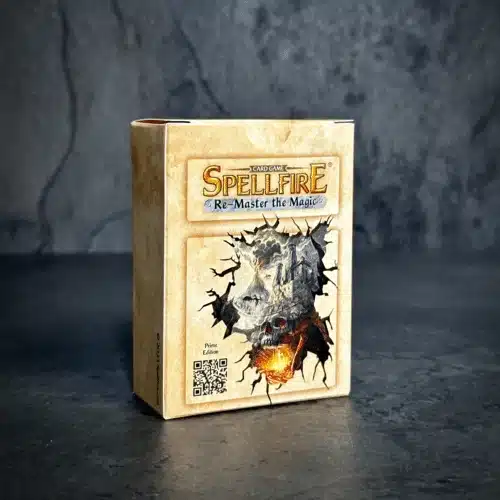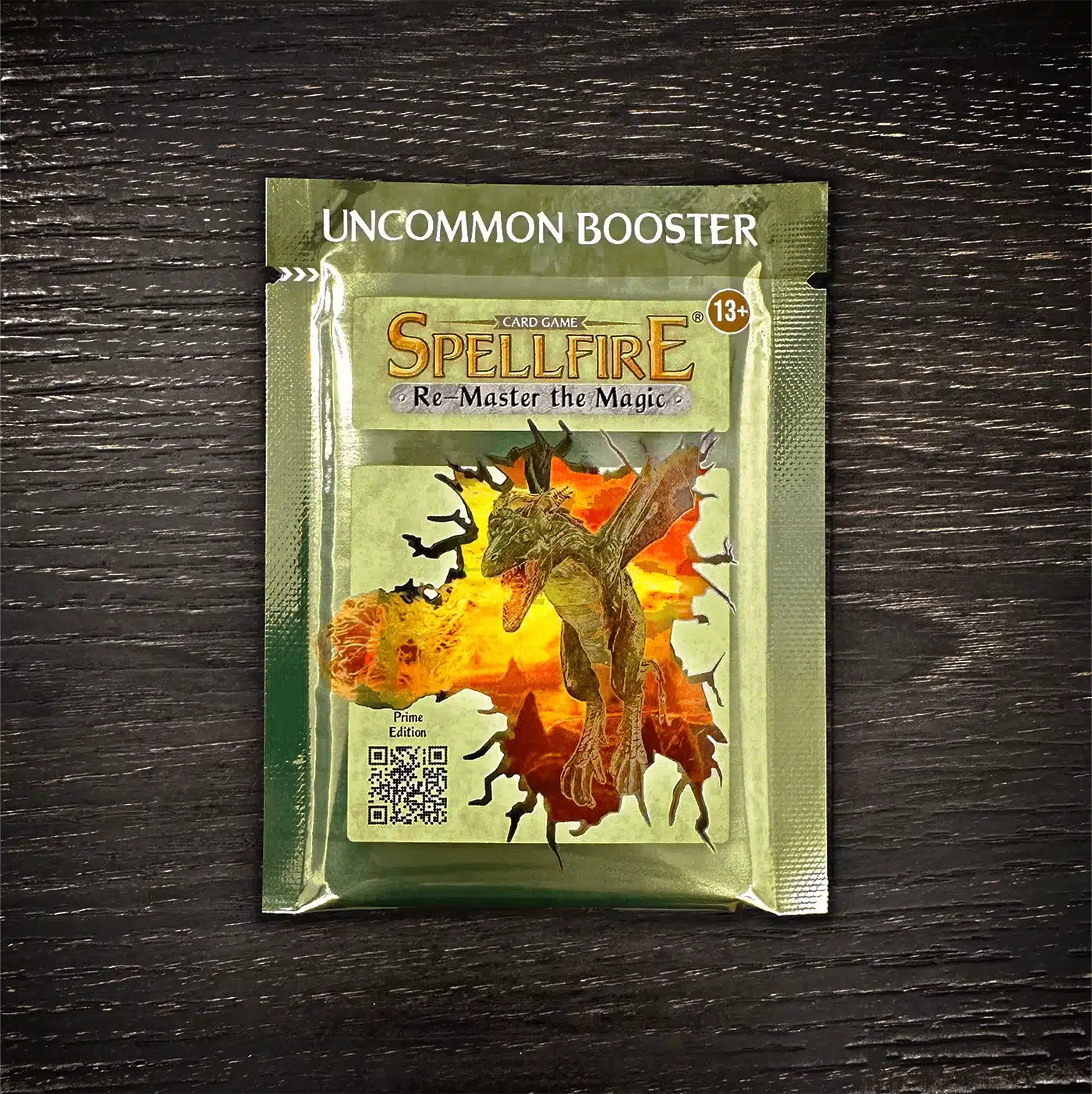The Rules
How to play Spellfire and use the appPhases And A Gameplay
Understanding the mechanics of the game
Let's get you introduced to the standard 55-card deck's gameplay. In cards decks of 25, 75, and 110 cards, there is a difference in the number of cards drawn, the hand size, and the winning conditions.
If optional rules are to be used, they should all be agreed upon before the game begins to avoid later disruptions. Players should select their own decks after the rules have been agreed upon. The list of Optional rules.
Each player randomly draws a card during a game. The last digit of the card number within the set should be remembered. It is the player with the highest number who goes first. Let's say, someone, draw The Caravan (131/CL) from the Spellfire classic booster. It is #131 of 999. "1" is the number that determines who goes first. If there is a tie, these players should draw again.
Next, each player shuffles his deck before placing it face down. All players are dealt their draw pile and never draw cards from each other.
After players have drawn five cards, they form their starting hand. With each turn, players draw three cards. The game is played clockwise around the table. Remember that no matter how many rule cards, magic items, or artifacts may indicate differently, each player draws three cards on their first turn. It is an absolute rule.
Two-Draw Mulligan
Stop the game and restart if a player hasn't played any realms and doesn't have realms in his hand by the end of his second turn. There are no winners or losers in such a situation. To request a mulligan, the player must have played any events that gave him a chance to get a realm, and the player must show his hand to prove he does not possess a realm.
Through card play, it is possible that a player had a realm but then discarded it. However, it is not possible to call a mulligan when the player discards a realm on his own. Mulligans are permitted if the player has never had a chance to play a realm card. A mulligan can be declared if a player has a realm in his hand, but another has the same realm in play.
The same player can only declare a mulligan once and is forced to play with the cards he draws in the second game. Players need to decide who goes first when they start a new game after a mulligan.
Phases of the Game Play
The game happens in phases, and everyone must follow their sequence closely. Players must perform phases 1, 5, and 6. Phases 0, 2, 3, and 4 can be omitted and avoided.
Phase 0 - Rule card play - Any actions performed before a player's turn begins. For instance, with Dungeon demolisher (302/Prime) may sneak up on and destroy any dungeon card (phase 0).
Phase 1 - Draw three cards from the draw pile - Depending on the player's cards, a player may draw additional cards every turn. If there is no other phase specified, all cards that grant extra cards do so in this phase.
Phase 2 - Play a realm/holding/dungeon - Even if a player has more in his hand, he can only play one of each. Steps A, B & C may take place in any order.
A) Play, Rebuild or Replace - There is only one option that you may select. Once a realm is played, the player cannot rebuild another realm in the same turn. See the further details about rebuilding and replacing realms in comprehensive information about realms.
B) Play your Holding - A holding can only be attached to a realm in the same world (Logos on the cards must match). Holdings cannot be rearranged once attached. It is possible to add a holding to a realm other than the one just played or rebuilt.
C) Play your Dungeon card - You must place the dungeon below any realm in your formation. Whenever it is played, it immediately takes effect.
Phase 3 - Cards are played into the pool, and powers are used - Performing steps A & B of this phase does not have to be done in any particular order, and it is possible to alternate between them. This step can only be performed by the player whose turn it is, not any other.
A) Place any number of champions, artifacts, and magical items into the pool. Keep in mind that magical items and artifacts attached to champions cannot be rearranged. It is possible to attach only one artifact to a champion from the same world (Logos on the cards must match). Multiple magical items can be attached to any champion. During this phase, you can continue to equip your champions with magical items if you wish. Make use of any phase 3 spell, psionic power, blood ability, or thief skill. Among the champions in the pool must be one who can use the spell, power, ability, or skill. Other players can negate the cards you are trying to play.
Phase 4 - Attack one of the opponent's realms - Unless a card's power allows it, the attacker cannot change the realm of his attack once it's chosen. A player can choose either his hand or pool of champions for the attack. To learn more about attacking realms, visit the Combat section.
Phase 5 - Use phase 5 cards to adjust the hand size - You cannot place champions in your pool, attach magical items, artifacts or perform other actions normally associated with phase 3 at this time unless they were obtained as spoils of victory.
A) In phase 5, you may play only the 5th phase cards, and there should be a champion who can use these cards. Usable phases are written at the end of the card's descriptions.
B) You must discard cards from the hand until your maximum hand size has been reached. There is a chance that some card powers might let you keep more cards.
Phase 6 - The end of your turn - It is now time for the player on the left to take their turn.
Victory
There can be different victory conditions depending on the game or tournament settings. The standard ones are when a player builds a six-realm formation or when one of the players in the match runs out of cards in their draw pile. They have the opportunity to finish their turn, but the game concludes when they end their turn.
The player with the most unrazed realms wins. In the event of a tied number of unrazed realms, the count of razed realms is considered. The player with the most unrazed and razed realms combined emerges as the winner. If a tie persists, holdings are also taken into account. If there is still no winner, champions in the pool are counted. The player with fewer champions wins. If the game remains tied, the levels of the champions are considered (counting the first number if there are two in the icon). The winner is the player with fewer levels among the champions. If the game is still tied, the remaining cards in the draw pile are counted. The winner is the player with more cards in the pile.
In the 25-card game, there is one important additional rule when determining the winning player. Initially, the player with the most unrazed realms wins. However, in the event of a time limit or depletion of cards in the draw pile, and if multiple players have three unrazed realms, the winner is determined by the player who placed the three realms first.
Rule of Cosmos
As a rule of the Cosmos, only one champion, one artifact, one realm, one dungeon, and one holding card can be 'in play' at a time. When a specific champion, artifact, realm, dungeon or holding is 'in play', another player cannot have it. If You have Suingu, the Necromancer (186/Prime) card 'in play,' your opponent cannot have the same card in his pool or battle.
Same cards, even if they are upgraded, cannot be played. Whether a realm is razed or not, it remains 'in play', preventing other players from playing the same realm into their formation.
Remember that champions in Limbo, Dungeon, Discard pile, and Abyss are not considered to be 'in play.' Check the Limbo and Dungeon sections for details on what happens if you play champions while another's is still stuck in Limbo or hides in the Dungeon.
Support cards - allies, spells, psionic powers, unarmed combat cards, blood abilities, and thief skills are not affected by the Rule of Cosmos. Events and Magical Items are not affected by the Rule of Cosmos either.


